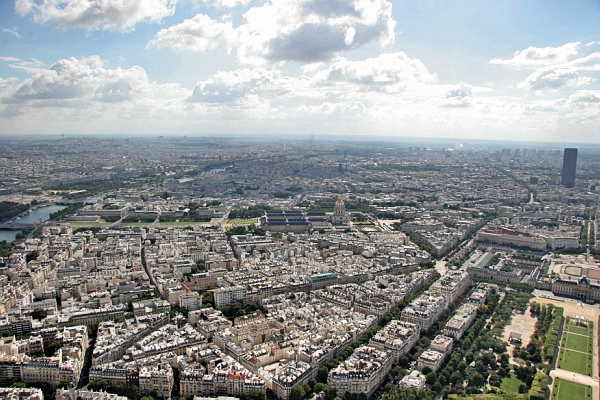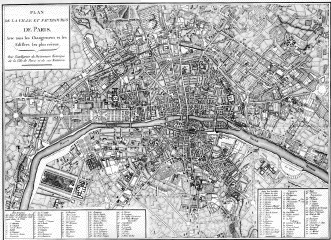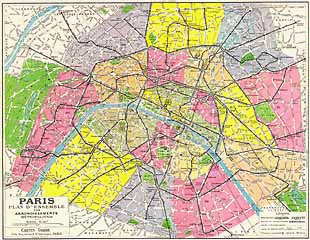Paris, France 


Paris began, around 250BC, as Lutetia Parisii, a small fishing village. Its settlers, the Celtic Parisii tribe, were followed by the Romans and the Franks, both of whom left their mark on the area.
The city's importance was confirmed in 987 AD when Hugh Capet, the Count of Paris, became King of France. Under his successors, the Capetians, Paris became the capital and accordingly grew in power and wealth.
By the 13th century the University of Paris, the Sorbonne, had been established on the Left Bank, construction of Notre-Dame Cathedral and the Louvre were underway and the city had been divided into three areas.
Ile de la Cite was the political and religious centre, the Quartier Latin (on the Left Bank) focused on art and culture and the Right Bank was a commercial area. Expansion continued, amid cycles of war, English occupation, civil struggles and social unrest.

The 14th century saw the construction of a perimeter wall around the city and the grand boulevards, which survive to this day.
The Renaissance brought Paris great cultural wealth, but was tempered by the onset, around 1560, of the savage Wars of Religion. Parisian Catholics forced protestant King Henry III to leave the city, and his successor Henry IV was only allowed to return to Paris by converting to Catholicism.
The monarchy moved out of Paris again in the late 17th century when Louis XIV transferred the seat of government to Versailles.
On July 14th 1789, an angry Parisian mob stormed the Bastille prison and sparked the Revolution. Louis XVI went to the guillotine, monarchy gave way to revolutionary government and France was proclaimed a republic. During the post-revolutionary chaos, Napoleon seized power and set about remodelling Paris in the neoclassical style he favoured.

After France's defeat by the Prussians in 1870, Parisian workers rebelled against the French government once more and in March 1871 established the Commune of Paris, a radical uprising that lasted only two months. Its subsequent suppression saw the city's streets barricaded, municipal buildings set on fire and 20,000 citizens executed.
With the onset of the Second Empire, the city was restructured. Whole neighbourhoods were demolished, the construction of grand avenues and squares began and 20 distinct neighbourhoods (arrondissements) were laid out.
As the 19th century ended, the opening of the Metro was followed by the construction of Gustave Eiffel's iconic tower, and the avant-garde movement flourished as artists and writers flocked to the city.

German troops failed to reach Paris during World War I, but the city was occupied during World War II between 1940 and 1944. Paris continued to be a political hotbed with the 1968 student strike and riots that prompted six million French people to down tools in solidarity.
Since the 1970s, Paris has benefited from huge investment in its infrastructure and in projects such as the Georges Pompidou Centre, the National Museum of Modern Art and most recently the Channel Tunnel and the multi-billion dollar Disneyland Paris theme park.
The Main Monuments and Museums => Haussmann's scheme
Contents:
Attractions:- Ile de la Cite — Palais de Justice, Sainte-Chapelle, Conciergerie, Notre-Dame de Paris, The history of the cathedral,
- Musee du Louvre — History,
- Musee d'Orsay — History,
- Champs Elysees — Place de la Concorde, Palais Bourbon, Arc de Triomphe, La Defense,
- Latin Quarter — Pantheon, Saint-Germain des Pres, Saint Sulpice, Sorbonne,
- Tour Eiffel — Tour Eiffel, Palais de Chaillot, Ecole Militaire,
- Hotel des Invalides — History,
- Montmartre — Place du Tertre, Sacre Coeur, Moulin Rouge,
- Basilique de St.Denis — Basilique,
- Other Paris — Palais Royal, Colonne Vendome, Place Des Vosges, L'eglise de la Madeleine, Opera Garnier,
- Versailles — Chateau,
- Fontainebleau — History,
- Chateau in Val de Loire — Chateau,
- Palais de Chaillot, Tour Eiffel
- Tour Eiffel, Place de Varsovie, Palais de Chaillot, La Defense
- Tour Eiffel, The south of Paris
- Hotel des Invalides
- Place de la Concorde, Avenue des Champs Elysees, Arc de Triomphe
- Musee d'Orsay, Place de la Concorde, Jardin des Tuileries, Musee du Louvre
- Dining room of Napoleon, Musee du Louvre
- Palais Royal
- Basilique du Sacre-Coeur
- Parc des Buttes-Chaumont. Belvedere
- Parc des Buttes-Chaumont. Belvedere
- Bois de Boulogne
- Parc Zoologique, Bois de Vincennes, Le Rocher
- Parc Zoologique, Bois de Vincennes, Le Rocher
- Amboise, Val de Loire
- Chateau Royal d'Amboise, Val de Loire